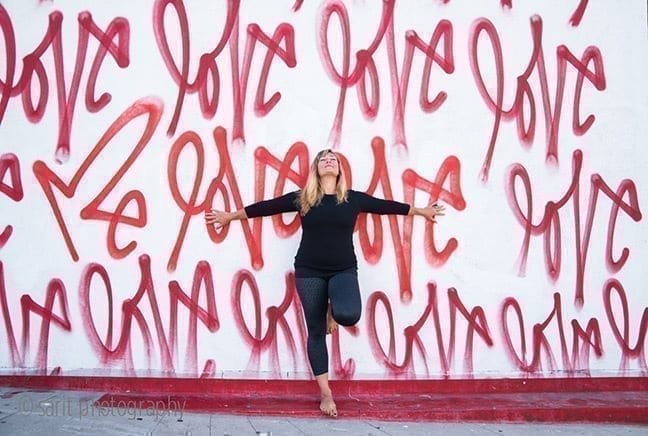Middle school is a cesspool of insecurity, fragile self-esteem, and crises in identity. At least, it was for me. It was as if somebody had cranked up the volume on my body insecurities and shame. What with developing breasts and hips and menses, there were loads of things that could go awry and countless reasons to feel horrible about myself.The beautiful-equals-thin club was exclusive. I never seemed to be able to get past the velvet rope. At times, I inched close, but I never got in with the beautiful people, the ones seemingly without a care in the world. And because I thought conforming to the beauty norm automatically spelled happiness, I wanted in. I was sick and tired of feeling bad about myself. My lack of willpower and faulty dedication to my body project led to my extra padding — and those extra pounds colored most of my days in less than sunny ways. If I could just lose 10 (or 20) pounds, I’d finally be happy.Instead of finding the holy grail of weight loss, I found punk rock. It was 1985 and I was 13, full of resentment and repressed anger. My angst was so enormous and stifled that I was bursting at the seams. I immediately resonated with the message, sound, and style of the vagrant, cast-out youth who wanted to turn mainstream society on its head. Unable to join the shiny, happy people I envied, I joined the scuffed-up, angry throng at punk shows and parties across southern California. From Fender’s Ballroom in Long Beach and the Country Club in Reseda to backyard parties and abandoned buildings, I’d found a crew of rabble rousers where I thought I belonged. When I couldn’t join the ranks of the trendy popular at school, I just gave ’em the middle finger.Shaving and dying my hair (decades before Gwen Stefani’s son, Kingston, was sporting a blue faux-hawk at age 4 without turning too many heads) was liberating and anti-mainstream. But within a couple years, the thrill and satisfaction of aligning with this rowdy counterculture grew stale. It started to feel anything but transgressive.Ten years ago, as I was finishing my first year as a college professor, a student handed me a film. “Professor Klein, for some reason this movie reminds me of you.” I looked down at the copy of “SLC Punk” he’d placed in my hand. I came home and settled in for an incredibly funny and introspective 90 minutes. Set in Salt Lake City in 1986, Stevo and Heroin Bob are one of a few die-hard punks in highly conservative Mormon country. What struck me was that the fictional characters featured in the film were real-life characters that I had met in my own life, albeit a couple thousand miles away. They wore the clothes, or the uniform, that my friends and I wore during that same time period. From the music, the behaviors, and the hairstyles down to the black socks, my life and my friends during that period were identical. Not only were we identical to these characters, or tropes, but we were identical to one another. And this was exactly why the punk scene and the “alternative movement” at that time seemed so limiting.We were drones and slaves to conformity within our own, alternative counterculture. We may have given the finger to the trendies and the jocks that we despised for complying with mainstream expectations, but we set limits on ourselves and the members of our community. We wouldn’t dare wear something that might be considered uncool by our punk comrades. Two years in, I stepped back and saw that we all looked, sounded, and acted the same. We were just trapped inside another cultural box.At the end of “SLC Punk,” Stevo’s love interest, a rich girl named Brandy, questions him about his blue Mohawk. She asks him if he’s trying to make a political statement because, to her, it’s much more of a fashion choice devoid of any deeper anarchistic philosophy. She tells him that liberation and freedom aren’t authentic when they are dictated by the external world. The film’s ending just confirmed what I had felt decades earlier: the punk scene wasn’t the answer to the liberation I was seeking.Years later, feminism freed my mind and yoga freed my body. It’s one thing to intellectualize self-love and another to embody it. And with time and consistent practice, my beauty paradigm expanded and shifted. I developed my capacity for patience, empathy, and forgiveness on the mat. These attributes stand in stark contrast to the “no pain, no gain” mentality and value of competition in our culture.As a result of cultivating these qualities and the ability to remain present and be (instead of do through force), my relationship to my body was healed and transformed. My body was no longer an obstacle to be conquered or make over on the road to happiness and love. No, I embodied love and I felt joy with each practice (and that has never waned in these seventeen years). And no numbers on the scale or amount of retail therapy can match that.My feminist consciousness and my yoga practice provided me the ability to truly shirk repressive and limiting standards of beauty with a big “fuck your beauty standards.”And mean it.This piece is an edited and modified excerpt from Yoga & Body Image: 25 Personal Stories About Beauty, Bravery and Loving Your Body, printed with permission from the author. Melanie Klein, M.A., is a writer, speaker and Associate Faculty member at Santa Monica College teaching Sociology and Women’s Studies. She is a contributing author in 21st Century Yoga: Culture, Politics and Practice and is featured in Conversations with Modern Yogis. She is the co-editor of Yoga and Body Image: 25 Personal Stories About Beauty, Bravery + Loving Your Body, and co-founder of the Yoga and Body Image Coalition.
© YouBeauty 2024




































